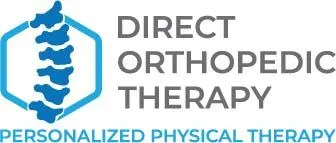Only effort and patience can overcome any injury. Physical therapy may be administered in addition to your doctor’s recommended treatment plan, including rest and medication. Medical treatment doesn’t necessitate physical therapy; it’s an integral component of the process.
To ensure you are back to the pre-injury state as quickly as possible, your physical therapist will devise a treatment plan using passive and active methods to help you regain mobility and functionality. Physical therapists are involved in helping you heal to the fullest extent possible.
Reach out for our services
Physical therapy helps patients feel better by treating their symptoms at their roots.
Physical therapists can use massage, heat, and ice therapies to relieve pain and swell the injured area. If they need to penetrate deeper into the tissues, they can employ other electrical stimulation and therapeutic ultrasound techniques.
Your therapist can speed up your recovery by improving the flow of blood and lymphatic fluid to the affected area. Learn more
PT aids in the process of self-adjustment.
If you have lost a limb, have restricted mobility, or are paralyzed in one or more portions of your body, a physical therapist can assist you in recovering. They may adjust assistive devices such as crutches and canes for you. Your healthcare provider can train you on using assistive devices and braces if necessary.
If you need help adjusting your routine, your therapist can assist you. For example, to regain mobility, you may have to learn a new way to get out of bed, go up and down the stairs, or perform other everyday activities.
If you want to learn more about how to build a durable body systematically, click here.
PT helps to restore movements:
Physical therapy helps you move your body to increase circulation to the injured area and strengthen the muscles, tendons, and ligaments around it despite your natural tendency to protect the area. Movement and tension prevent injured muscles and joints from hardening. Your mobility may be permanently harmed if you don’t engage in regular physical activity.
Stretching exercises are essential for regaining mobility and range of motion. Your physical therapist may use their hands or specialized instruments to break down muscular adhesions. In addition, medics may utilize electrical stimulation if you’re experiencing muscle spasms.
PT helps you perform at your best:
Your therapist helps you improve your posture and alignment through physical training. If your spine is aligned properly, your internal organs can function adequately, and muscles, bones, and joints can work and move better.
Physical therapists observe how you regularly use your body after an injury or repetitive motion injury and suggest improvement. If you learn a more efficient method of moving, you may be able to avoid re-injury or new injuries.
Conclusion:
Working with a physical therapist can assist you to improve your coordination, range of motion, and overall strength. In addition, many of the techniques you learn in physical therapy can be applied to your gym regimen or even incorporated into your regular activities once you are strong enough to do so.
Have questions? Book A Free Discovery Call


